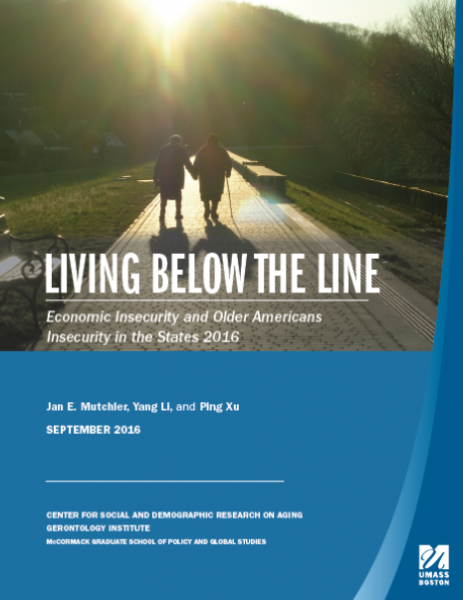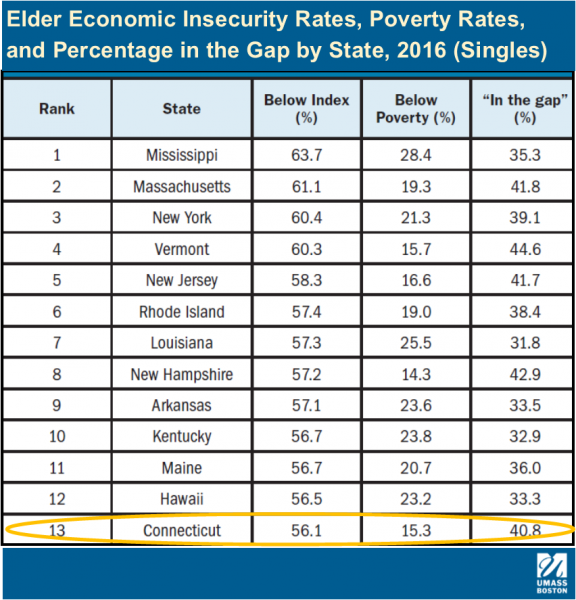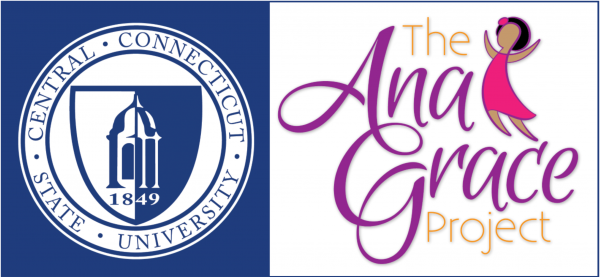Report Outlines Responses to Opioid Emergency as Numbers Climb
/It’s official. The opioid crisis has grown from a national crisis to a national emergency. That fact is plainly evident than in Connecticut. The national Centers for Disease Control and Prevention (CDC) estimates there are enough opioid prescriptions for every American adult to have their own bottle. Connecticut saw 729 deaths from drug overdoses two years ago, and 917 last year. Published reports suggest that the number is trending towards a thousand deaths in the state this year.
In 2012, Connecticut was ranked 50th in the nation in opioid deaths, with just 2 per 100,000 people. By 2015, that number spiked 5-and-a-half times, and Connecticut's ranking climbed to 12th.The latest numbers from the Office of the Chief State's Medical Examiner show the trend continued in 2016, with a 21 percent increase in deaths involving opioids in a year.
According to the National Center for Health Statistics, the first three quarters of 2016 brought an average overdose death rate of 19.3 per 100,000 population — a rate that’s 17 percent higher than during the same period in 2015. If 2016’s rate holds steady through the final quarter — data for it isn’t yet available — it is anticipated that more than 62,300 people will have died of overdoses in the United States in 2016. For Connecticut, however, last year’s numbers were more than 25 deaths per 100,000 - significantly higher than the national average.
A 28-page policy report produced this year by the Governing Institute found that Baltimore, Washington, Ohio, Massachusetts and Pennsylvania “serve as models for other states to jump start their efforts,” to respond to the opioid crises.
The addictive nature of opioids and overprescribing are fueling the epidemic, the Governing report explains, pointing out that “in the last 15 years, the number of opioids prescribed and sold in the U.S. has quadrupled, even though the amount of pain Americans report is the same.”
“The most important thing for policymakers to remember is this epidemic is a multi-faceted that requires multifaceted policy solutions,” the report, “A Crisis: A Practical Guide for Policymakers to Mitigate the Opioid Epidemic,” concluded.
A report released last week from a national commission led by New Jersey Gov. Chris Christie noted that number of deaths is approaching 142 each day from drug overdoses across the country – a death toll that is "equal to September 11th every three weeks," AP reported.
State medical examiner James Gill said in May that his office sees at least two or three overdose deaths a day, and as many as five or six. The state budget crisis has kept the state’s Chief Medical Examiner’s Office from releasing quarterly data for this year, WTNH reported this month.
“There is no single spot on the continuum of interventions that is the magic bullet,” explained Ohio’s director of the Department of Mental Health and Addiction Services in the Governing Institute report. “Really you just have to take it piece by piece.”
 The report noted that “Medicaid beneficiaries are prescribed opioids at twice the rate of the rest of the population, and research indicates they are at 3 to 6 times greater risk of a fatal overdose.” The report also observed the impact of the epidemic on the nation’s prison population: Eighty percent of prisoners have a history of drug abuse; 50 percent are addicted to drugs; 60 to 80 percent of prisoners abusing drugs commit a new crime after release; and approximately 95 percent of addicted prisoners relapse when they’re released, according to National Association of Drug Court Professionals (NADCP) data.
The report noted that “Medicaid beneficiaries are prescribed opioids at twice the rate of the rest of the population, and research indicates they are at 3 to 6 times greater risk of a fatal overdose.” The report also observed the impact of the epidemic on the nation’s prison population: Eighty percent of prisoners have a history of drug abuse; 50 percent are addicted to drugs; 60 to 80 percent of prisoners abusing drugs commit a new crime after release; and approximately 95 percent of addicted prisoners relapse when they’re released, according to National Association of Drug Court Professionals (NADCP) data.
In 2016, the Connecticut General Assembly passed a law that prohibits a prescribing practitioner authorized to prescribe an opioid drug from issuing a prescription for more than a seven-day supply to (1) a minor or (2) an adult for first-time outpatient use (PA 16-43). That timeframe was tightened further under legislation signed into law last month. The 2016 law included an exception if the prescriber, in his or her professional judgment, determines a longer prescription is necessary, OLR noted.
In June, Gov. Malloy signed a bill that has as a key component reducing the maximum opioid drug prescription for minors from seven to five days. It was introduced by Malloy at the beginning of session and passed unanimously through the Senate and House. The bill also increases security on controlled substance prescriptions by requiring scheduled drugs to be prescribed only electronically, which officials believe will cut back on the potential for prescription forgeries. And it requires increased data-sharing between state agencies regarding opioid abuse and overdose deaths.
Attorney General George Jepsen’s office recently announced it would be joining a multistate probe into the marketing practices of opioid drugmakers. Jepsen did not specify any companies by name, citing “the ongoing and sensitive nature of the investigation.”
Connecticut law allows various health care providers to prescribe opioids and opioid antagonists within their professional scope of practice, including physicians, APRNs, dentists, nurse-midwives, optometrists, PAs, podiatrists, and veterinarians, according to the Office of Legislative Research. Pharmacists can prescribe opioid antagonists if they receive a special certification and training to do so.




 iven the nation’s key public health target of limiting added sugars in children’s diets, flavored milk has come under scrutiny in the context of school nutrition, UConn Today recently reported.
iven the nation’s key public health target of limiting added sugars in children’s diets, flavored milk has come under scrutiny in the context of school nutrition, UConn Today recently reported.
 Among adults who admit to not always using safety belts in the back seat, 4 out of 5 surveyed say short trips or traveling by taxi or ride-hailing service are times they don't bother to use the belt. Nearly 40 percent of people surveyed said they sometimes don't buckle up in the rear seat because there is no law requiring it. If there were such a law, 60 percent of respondents said it would convince them to use belts in the back seat. A greater percentage said they would be more likely to buckle up if the driver could get pulled over because someone in the back wasn't buckled.
Among adults who admit to not always using safety belts in the back seat, 4 out of 5 surveyed say short trips or traveling by taxi or ride-hailing service are times they don't bother to use the belt. Nearly 40 percent of people surveyed said they sometimes don't buckle up in the rear seat because there is no law requiring it. If there were such a law, 60 percent of respondents said it would convince them to use belts in the back seat. A greater percentage said they would be more likely to buckle up if the driver could get pulled over because someone in the back wasn't buckled.
 The Governors Highway Safety Association issued a report in 2015, "Unbuckled In Back," analyzing the difference in highway fatalities between states that require rear seat passengers to buckle up and those that do not, the Hartford Courant reported. At a Connecticut legislative hearing that year, the paper noted, state Transportation Commissioner James Redeker said that everyone in a passenger vehicle should buckle up, saying statistics show "people become projectiles because they're not strapped in a safety device."
The Governors Highway Safety Association issued a report in 2015, "Unbuckled In Back," analyzing the difference in highway fatalities between states that require rear seat passengers to buckle up and those that do not, the Hartford Courant reported. At a Connecticut legislative hearing that year, the paper noted, state Transportation Commissioner James Redeker said that everyone in a passenger vehicle should buckle up, saying statistics show "people become projectiles because they're not strapped in a safety device." A pilot partnership between the AGP and CCSU establishes a new base of operations for the
A pilot partnership between the AGP and CCSU establishes a new base of operations for the 
 Márquez-Greene will also work with the School of Education & Professional Studies to establish a Center for Social & Emotional Learning to provide education, training, and research to the campus, community, and state. Other expected collaborations include the training of CCSU undergraduate and graduate students in the Marriage & Family Therapy, Psychology, and Counseling programs in the use of social-emotional curriculum in the classroom.
Márquez-Greene will also work with the School of Education & Professional Studies to establish a Center for Social & Emotional Learning to provide education, training, and research to the campus, community, and state. Other expected collaborations include the training of CCSU undergraduate and graduate students in the Marriage & Family Therapy, Psychology, and Counseling programs in the use of social-emotional curriculum in the classroom.

 Rounding out the top 10 are Wisconsin, Iowa, New Hampshire, Louisiana, Rhode Island, Colorado, Nebraska and South Dakota. The states were ranked based on the most gyms using these four categories: total number of gyms, state population in 2016, people per gym, and gyms per capita (100,000 people). Totals were based on the 14 largest gym chains in America. There were more than 36,000 health clubs in the U.S. last year, up from 29,000 a decade ago.
Rounding out the top 10 are Wisconsin, Iowa, New Hampshire, Louisiana, Rhode Island, Colorado, Nebraska and South Dakota. The states were ranked based on the most gyms using these four categories: total number of gyms, state population in 2016, people per gym, and gyms per capita (100,000 people). Totals were based on the 14 largest gym chains in America. There were more than 36,000 health clubs in the U.S. last year, up from 29,000 a decade ago.
 The index publication is supported by the Anthem Blue Cross and Blue Shield Foundation. It is a scientific snapshot of the health and fitness status at a metropolitan level using data made up of personal health, community and environmental factors.
The index publication is supported by the Anthem Blue Cross and Blue Shield Foundation. It is a scientific snapshot of the health and fitness status at a metropolitan level using data made up of personal health, community and environmental factors.
 The region’s personal health rank was 13; its community/environmental indicators rank was 25, leading to an overall ranking of 13th. The analysis points to “Areas of Excellence,” in the region, including:
The region’s personal health rank was 13; its community/environmental indicators rank was 25, leading to an overall ranking of 13th. The analysis points to “Areas of Excellence,” in the region, including:

 since 1897. In 2015, Saint Francis became part of Trinity Health of New England, an integrated health care delivery system that is a member of Trinity Health, Livonia, MI, one of the largest multi-institutional Catholic health care delivery systems in the nation.
since 1897. In 2015, Saint Francis became part of Trinity Health of New England, an integrated health care delivery system that is a member of Trinity Health, Livonia, MI, one of the largest multi-institutional Catholic health care delivery systems in the nation.
 The
The 

























